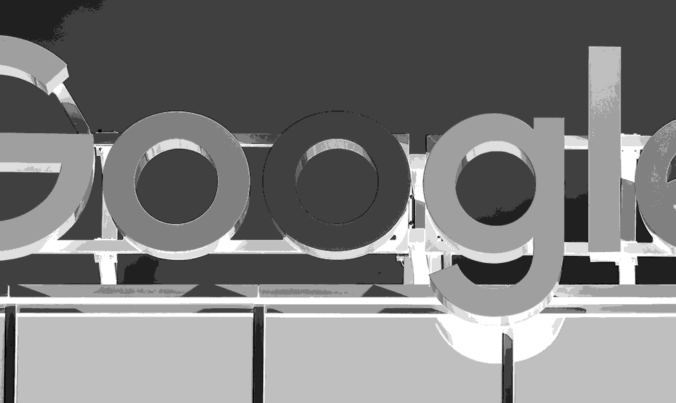- - PPC - ANALYTICS - PPC - ANALYTICS - PPC - ANALYTICS
DAILY SPEND LEVEL BUDGETS ARE AN AVERAGE, NOT A MAXIMUM. IN SOME CASES, THE DAILY BUDGET MIGHT NOT BE MIGHT, WHILE IN OTHERS, THERE MIGHT BE AN OVERSPEND, SOMETIMES AMOUNTING TO AS MUCH AS DOUBLE THE ALLOTTED DAILY BUDGET.
But this is something you needn’t be concerned about anymore, as Google now balances your budget so that you don’t exceed your daily budget times 30.4, the average number of days in a month. Many a time, the daily budget isn’t met and sometimes, there is an overspend that amounts to as much as double the daily budget. But, there’s no need to worry anymore because Google balances your budget so that it doesn’t exceed the daily budget multiplied by the average number of days in a month (30.4). Lulls and spikes in daily activity can be accounted for by campaigns this way.
It is not ideal to manage the spends by limiting your budget as this means your ads will not show throughout the day. The ‘Limited by budget’ notice is not something you want to see in your campaign.
Operating with a set monthly or quarterly budget is common with most businesses. Even though a campaign may be a line item in a budget, more often than not, paid searches across all campaigns tend to have a common monthly budget. A campaign may be a line item in the budget, but more often than not, paid search has a common monthly budget. For example, you may get USD 10,000 for a budget and have to decide on how to split it between campaigns and search engines.
Many campaigns are often organized around the budget because of this. You can also organize your campaigns based on the conversion type or the marketing funnel stage. You can either base this on how much each one is worth or on the click volume required to meet your goals. Alternatively, your budget allocations can be based on product type, brand, or an offer. You can control each of these budgets by segmenting them into distinct campaigns.
SHARED BUDGETS
AdWords and Bing Ads offer a Shared Budget option as well. Shared Budgets allow you to allocate a single budget across multiple campaigns and can be accessed from the Shared Library. Budget allocation is taken care of by the search engines automatically. If one campaign under spends, the remaining daily budget can be used by other campaigns when you use Shared Budget.
DELIVERY METHOD
You can choose how often AdWords are shown by setting the pace using the Delivery method within the budget setting.
Your PPC budget gets evenly spent throughout the day or at the time your ads are scheduled to show when you use the Standard option. While this means that your ads may be seen throughout the day, Google may not show them at every opportunity as it holds back delivery to ensure the set budget lasts for the entire day. It’s also important to note that as Google’s algorithm uses historical data to predict how often ads will be triggered to view and how much each click will cost, your entire budget may not get utilised.
On the other hand, the Accelerated option aims to show ads as often as is allowed by the auction, as opposed to making your budget last the entire day. Your daily budget is more likely to be met using this option.
If you have a limited PPC budget, the drawback of using Accelerated is that your ads may stop showing early or even halfway through the day and you’ll miss targeting viewers later in the day. Ads won’t start showing again until the budget resets the next day.
The major advantage of using Accelerated is that you are likely to get more clicks as your ads show more often. It’s also easier to account for peaks and lulls in daily search volumes.
You can change your delivery method at any time in this setting.
BIDDING METHOD
Bidding is the next campaign setting and it involves setting the bidding type for the campaign.
Google prefers that advertisers opt for one of its automated bidding solutions instead of manually setting bids.
Based on your other campaign settings, the Bidding section defaults to a guided walk-through.
Clicking ‘Select a bid strategy directly’ at the bottom lets you see all of the bid strategy options available. The Manual CPC options are at the very bottom and all the automated options are listed at the top.
SMART BIDDING STRATEGIES
There is a subset of Smart Bidding strategies within the group of automated bid strategies. They all use historical data to predict conversion outcomes as they all rely on machine learning algorithms. To meet conversions or conversion value targets, they need a vast amount of historical data to make these predictions and set bids. Bids for all auctions are made in real time. They are based on many factors, such as user’s device, browser, location and location intent, demographics, whether they are on a remarketing list, the day and time of day, and many more factors. For Smart Bidding strategies to work for Search campaigns, AdWords conversion tracking must be set up.
SMART BIDDING STRATEGY OPTIONS
-
Target CPA (cost per acquisition)
With this Paid Search strategy, you decide how much you’re willing to spend for a conversion and set your target CPA accordingly. From there, Google will aim to set bids to meet that CPA target on average. If you have had at least 30 conversions within the past 30 days, then this strategy is ideal for you.
-
Target ROAS (return on ad spend)
Based on the target return you set for an ad spend, this strategy aims to maximize revenue or conversion value. The ROAS formula is: Conversion value ÷ ad spend x 100%. This is ideally suited for advertisers who have had at least 50 conversions within the past 30 days. By capitalising on the simplicity of GMB, you maximise the chance of conversions.
-
Maximize Conversions
The newest Smart Bidding option, will aim to spend the full daily budget to yield the greatest number of conversions.
-
Enhanced CPC (ECPC)
This strategy adjusts the CPC based on the probability of conversion by raising the max CPC bid in auctions that the algorithm predicts are more likely to convert, and lowering the bid in auctions deemed less likely to convert. This is ideal for advertisers that have had at least 30 conversions within the past 30 days. ECPC can also be used with manual bidding.
PORTFOLIO STRATEGY
A portfolio strategy allows you to apply a single strategy across multiple campaigns that use the same target CPA or ROAS settings. A portfolio strategy can be created when you create a new campaign in the campaign settings or from the Shared Library.
ADDITIONAL SETTINGS
In the additional settings you can:
-
Choose a start and end date. If you don’t choose a start date, the campaign begins as soon as you click save, and if you don’t choose an end date, the campaign will run indefinitely.
-
Ad extensions can be added when you create your strategy or later along with ad copy and keywords.
-
You can also assign audiences at this stage or you can add them later during your campaign build out.
At the bottom of the settings page click the ‘Additional settings’ to access more extension options and settings for ad rotation, ad scheduling, and location options among others.



